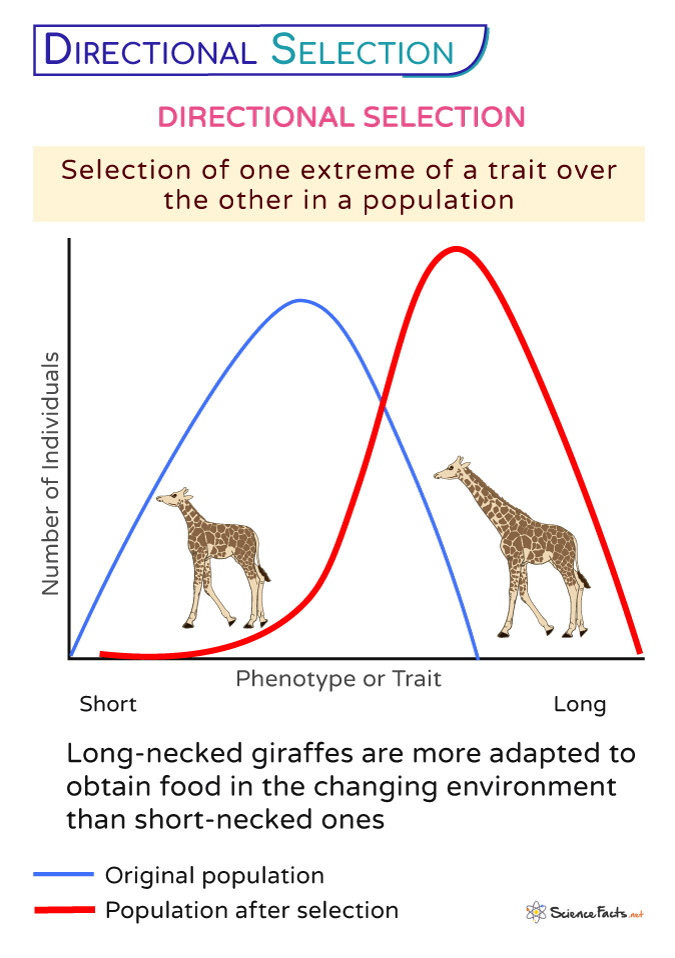Charles Darwin first proposed this type of natural selection in ‘On the Origin of Species’ after observing the beak length of the Galapagos finches.
Directional Selection Graph
In a statistical analysis, directional selection shows a population bell curve that shifts towards the extreme left or right. However, unlike stabilizing selection, the graph’s height does not change. Also, there are fewer average individuals in the population.
Examples of Directional Selection
How is Directional Selection Related to Evolution
Directional Selection vs. Disruptive Selection
Evolution of Long-Necked Giraffe
With decreased food sources and competition with other herbivorous animals, the trees with greater heights became a more favorable food source. The giraffes with long necks could feed more efficiently and survive better than those with shorter necks. Over time, this environmental pressure led to the directional selection of longer necks in giraffes, resulting in the evolution of these remarkable creatures.
Industrial Melanism
During the 18th and the 19th centuries, the industrial revolution in England caused the light-colored moths to be replaced with dark-colored ones as the latter had a survival advantage in polluted areas because they could blend in with the soot-covered tree trunks and were less likely to be preyed upon by birds. Light-colored moths, on the other hand, stood out and were more easily spotted by predators. It led to the directional selection of dark-colored moths.
Population of Black Bears
Based on the fossil record, European black bears decreased in size during the ice ages. However, their size increased in the glacial period. The reason could be that larger individuals enjoyed an advantage during extreme cold and limited food supply than the smaller ones.
Human Interactions
Sometimes, human interactions such as fishing and hunting can cause directional selection. Humans always prefer larger fishes or animals during their activities for their economic benefits. Over time, this causes a decrease in the larger-sized population, causing a skew toward smaller individuals. The bell curve thus shifts towards the left. However, animal predation (larger animals preying on the smaller ones) in the wild can cause a decrease in the population of the smaller animals, which leads the bell curve showing the population size to shift towards the left. However, one common aspect of directional and disruptive selection is that both decrease genetic variation in a population.
